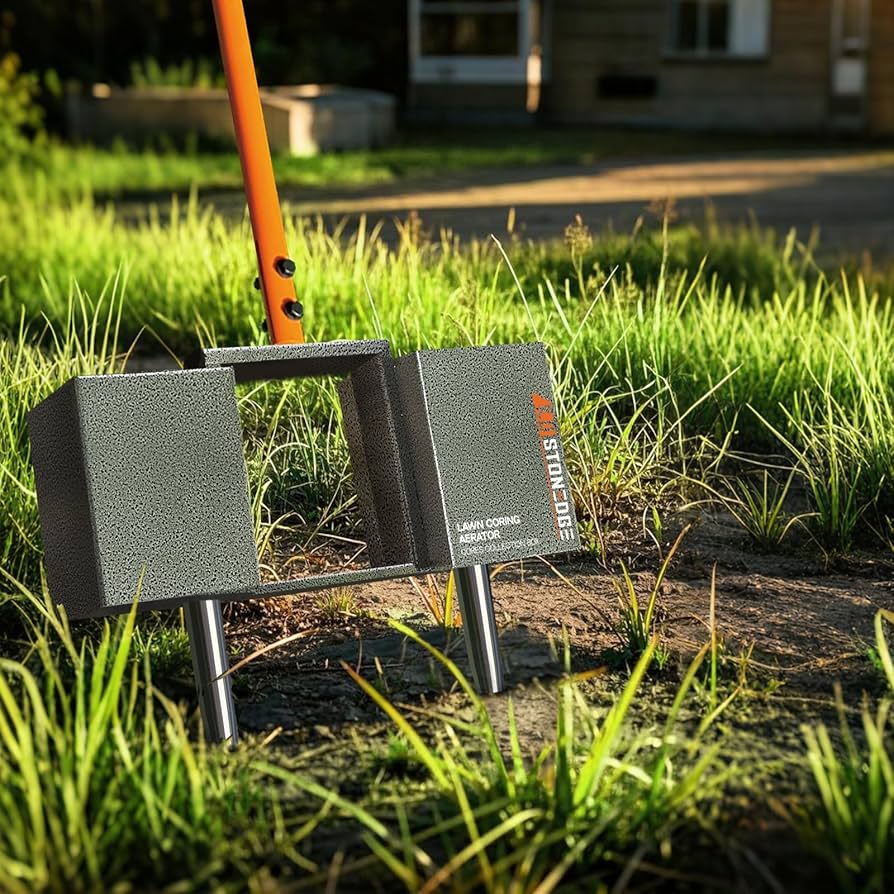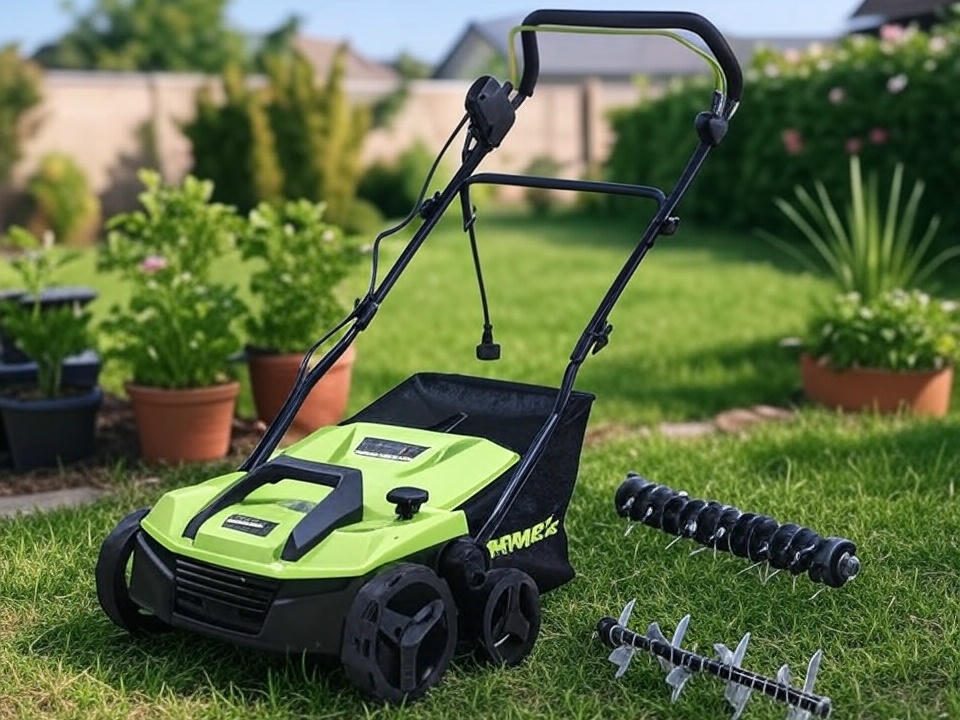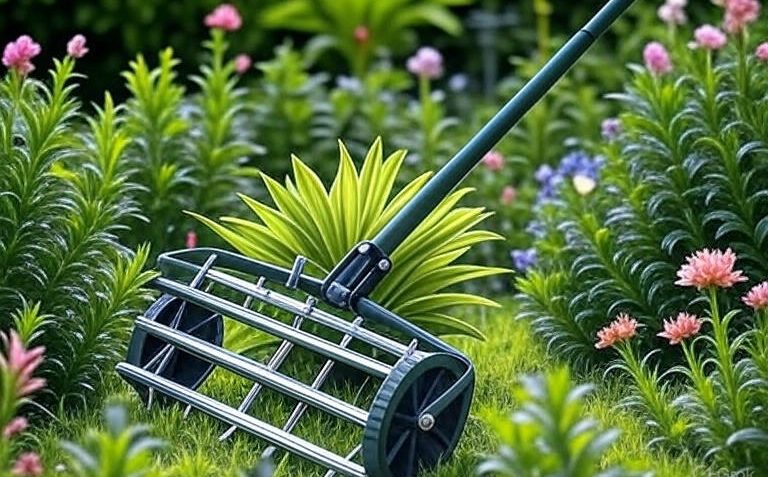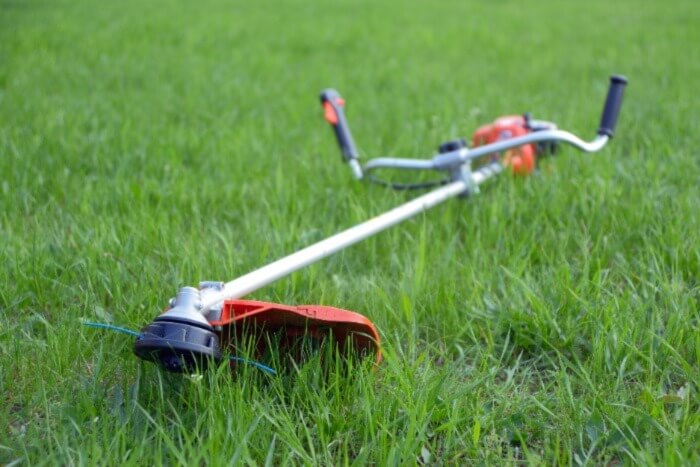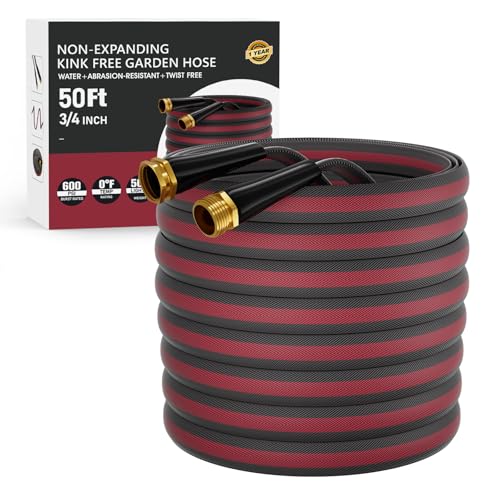Imagine stepping outside to a lush, green lawn that feels like a soft carpet under your feet. You might wonder how to achieve this dream yard and if aerating your lawn could be the key to helping your grass grow.
The answer could transform your outdoor space into a vibrant, healthy oasis. You’ll discover the secrets behind aeration and how it can unlock your lawn’s potential. Picture your neighbors admiring your perfect lawn and feel the satisfaction of nurturing your grass to its fullest.
Ready to learn how aeration can make a difference? Let’s dive in and explore why this simple technique might be your lawn’s best friend.
Contents
Benefits Of Lawn Aeration
Aerating your lawn helps grass grow by improving soil health. It allows air, water, and nutrients to reach the roots. This process strengthens grass, making it more vibrant and resistant to stress.
Lawn aeration might sound like a chore, but its benefits are undeniable. It’s an essential practice for maintaining a lush, healthy lawn. By aerating your lawn, you’re not just poking holes in the soil; you’re setting the stage for vibrant grass growth.
Improved Soil Compaction
Do you ever notice how your lawn feels hard and compacted underfoot? This is a sign of soil compaction, which can hinder grass growth. Aerating your lawn breaks up that compacted soil, allowing grass roots to grow deeper and stronger. Imagine trying to breathe in a crowded room versus an open field. Your grass feels the same relief when you aerate. It’s like giving your lawn room to stretch and thrive.
Enhanced Nutrient Absorption
Is your lawn looking dull despite regular fertilization? Aeration might be the missing piece of the puzzle. When you aerate, the tiny holes you create allow essential nutrients to reach the roots more effectively. Consider how a sponge absorbs water better when it’s not squeezed tight. Your lawn, too, needs space to absorb nutrients. Aeration ensures that fertilizers don’t just sit on the surface but go where they’re needed most.
Increased Water Infiltration
Have you ever noticed puddles forming on your lawn after a rainstorm? This can indicate poor water infiltration. Aeration helps water seep into the soil efficiently, rather than running off the surface. Think about watering a plant in a pot with no drainage holes. Without proper infiltration, water accumulates and can damage the roots. Aerating ensures your lawn gets the hydration it needs without drowning. By considering these benefits, you’re well on your way to a healthier, more vibrant lawn. Have you tried aerating your lawn before? Share your experiences and see if others have noticed similar transformations.
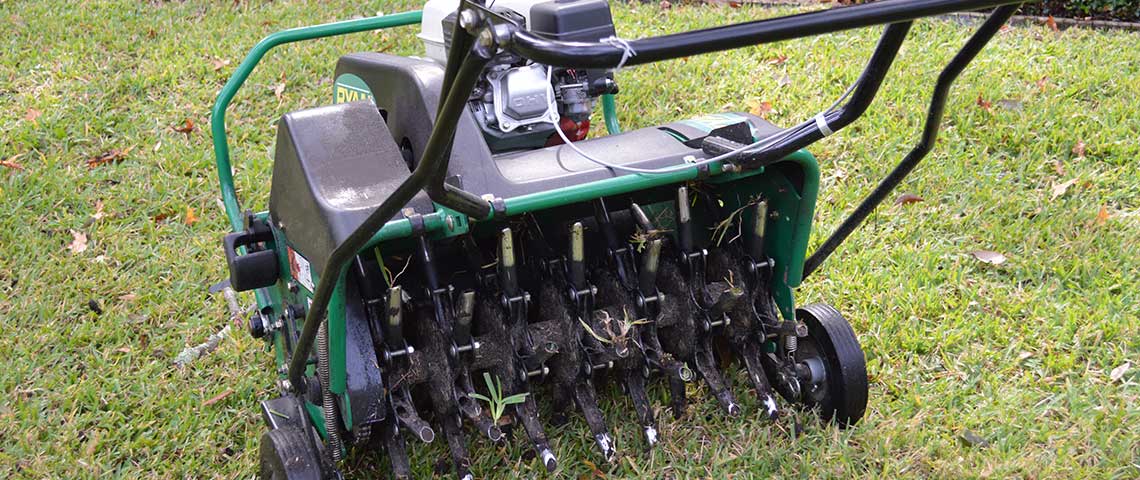
Credit: www.pennington.com
Methods Of Aerating A Lawn
Aerating your lawn is vital for healthy grass growth. It involves creating holes in the soil to allow air, water, and nutrients to reach grass roots. Different methods exist to aerate a lawn. Each technique suits specific soil types and lawn needs. Explore these methods to find what works best for your lawn.
Core Aeration
Core aeration is popular among homeowners. It involves removing small soil plugs from the ground. This reduces soil compaction and allows vital nutrients to reach roots. The removed plugs decompose and enrich the lawn. Core aeration is ideal for clay-heavy soils. It improves drainage and promotes deeper root growth.
Spike Aeration
Spike aeration uses solid spikes to puncture the soil. This method is less intrusive than core aeration. It helps with minor soil compaction. Spike aeration is best for sandy or loose soils. It allows water and air to penetrate without removing soil. A simple solution for quick lawn aeration.
Liquid Aeration
Liquid aeration uses chemical solutions to break down soil compaction. It works on lawns without creating physical holes. This method is suitable for large lawns. Liquid aeration improves soil structure and nutrient absorption. It is an easy way to treat compacted soil with minimal effort.
Best Time To Aerate
Aerating your lawn in early spring or fall boosts grass growth by improving air, water, and nutrient flow to roots. Cooler temperatures and moist soil during these seasons help roots strengthen and spread effectively, promoting a lush, healthy lawn.
Aerating your lawn can significantly boost grass growth, but timing plays a crucial role in its effectiveness. Choosing the right time to aerate ensures that your efforts yield the best results. Let’s dive into the optimal timing for aeration to help your lawn flourish.
Seasonal Considerations
The season you choose for aeration can impact the success of the process. Cool-season grasses, like Kentucky bluegrass and fescue, thrive when aerated in early spring or early fall. This timing aligns with their peak growth periods, allowing the grass to recover quickly and strengthen. Warm-season grasses, such as Bermuda and Zoysia, benefit from aeration in late spring or early summer. This is when these types of grass are actively growing and can most efficiently utilize the air, water, and nutrients provided by aeration. Understanding the growth cycle of your grass type is essential for choosing the right season.
Weather Conditions
Weather conditions play a critical role in determining the best time to aerate your lawn. Aim for periods when the soil is moist, but not overly wet. Aerating after a light rain can be ideal, as the soil is soft enough for aeration tools to penetrate easily. Avoid aerating during drought or extreme heat, as this can stress the grass and hinder recovery. Similarly, aerating when the ground is too dry can make the task more challenging and less effective. Consider the forecast and choose a time when the weather is mild and cooperative. Choosing the right time to aerate your lawn can make a noticeable difference in its health and appearance. Are you ready to give your lawn the care it deserves? Proper timing, paired with the right techniques, will have your grass looking lush and vibrant in no time.

Credit: www.turfcaresupply.com
Signs Your Lawn Needs Aeration
Your lawn might look green, but it may still need aeration. Aeration helps grass breathe and absorb nutrients. This process makes soil healthier for roots. Recognizing signs of compacted soil is crucial.
Thinning Grass
Grass should be thick and lush. If the grass is thinning, it may need aeration. Sparse patches indicate poor soil health. This can restrict root growth. Aeration can boost grass density.
Water Puddling
Water puddles on the lawn suggest compacted soil. Good soil should absorb water evenly. Puddling means water isn’t penetrating the ground. This can lead to weak roots and poor grass health.
Soil Hardness
Hard soil is tough on grass. Healthy soil should be soft and crumbly. If it’s difficult to dig or poke, aeration might be needed. Hard soil blocks air and nutrients. Aeration loosens the soil, helping grass grow better.
Common Mistakes To Avoid
Maintaining a lush, green lawn isn’t just about watering and mowing. Aerating your lawn can significantly boost grass growth by improving soil health. However, it’s easy to make mistakes that can hinder this process. Let’s delve into some common pitfalls you should avoid to ensure your lawn thrives.
Aerating At The Wrong Time
Timing is everything when it comes to aerating. Many homeowners assume anytime is good for aeration, but that’s not the case. Aerating during extreme temperatures can stress the grass. Spring and fall are ideal seasons. During these periods, grass is actively growing and can recover quickly. If you aerate in summer or winter, you risk damaging your lawn instead of helping it.
Over-aerating
It might seem like more aerating equals better grass growth. But over-aerating can lead to soil compaction rather than alleviating it. Your lawn needs time to heal after aeration. Aerate once a year or twice if your soil is particularly compacted. Too much aeration can harm the grass roots. Give your lawn a break and let it breathe.
Ignoring Soil Type
Not all soils are the same. Understanding your soil type can guide you on how often and deeply you should aerate. Sandy soil requires less frequent aeration than clay soil. Clay soil tends to compact more quickly, needing attention more often. Assessing your soil type will lead to better aeration decisions, ensuring your lawn flourishes.
Have you ever considered the impact of aeration on your lawn? Avoid these mistakes, and you’ll be on your way to a healthier, greener lawn.
Post-aeration Care
Aerating your lawn boosts grass growth by improving soil airflow and nutrient absorption. It helps roots grow stronger and deeper. Regular aeration also reduces soil compaction, creating a healthier lawn environment.
Aerating your lawn is a fantastic way to ensure healthy grass growth. It helps by improving soil aeration, water absorption, and nutrient access. But what happens after aeration is just as crucial. Proper post-aeration care can greatly impact your lawn’s health. Let’s dive into a few essential steps to make sure your lawn thrives.
Fertilization Tips
Applying fertilizer after aeration can boost grass health. Choose a fertilizer rich in nitrogen, as it encourages strong growth. Spread it evenly across the lawn. This ensures every part of your lawn benefits. Follow the instructions on the fertilizer package carefully. Over-fertilizing can harm the grass.
Watering Guidelines
Watering your lawn post-aeration keeps it hydrated. Water deeply to reach the roots. This helps them absorb nutrients better. Aim to water your lawn once or twice a week. Check the soil moisture regularly. Avoid watering too much. Overwatering can lead to root rot.
Grass Seeding Advice
Aeration creates perfect conditions for grass seeding. Choose seeds suited to your climate and soil type. Spread seeds evenly over the aerated areas. Lightly rake the soil to cover the seeds. This helps them settle in. Keep the soil moist until the seeds germinate. This encourages healthy new grass growth.
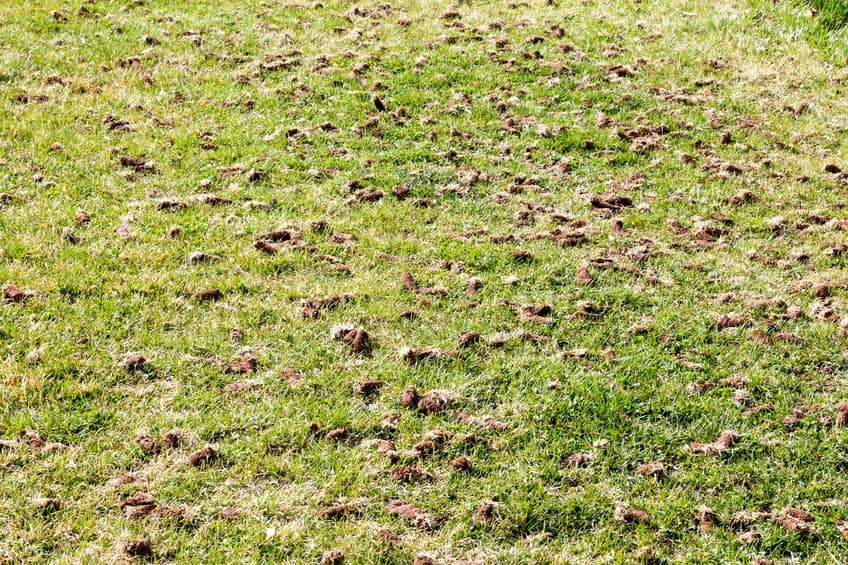
Credit: www.turfscapeohio.com
Frequently Asked Questions
What Does Lawn Aeration Do For Grass?
Lawn aeration improves soil health by reducing compaction and enhancing air, water, and nutrient penetration. This process stimulates root growth and strengthens grass, making it more resilient. Aerating allows roots to grow deeper, promoting a lush and healthy lawn. It’s especially beneficial for lawns with heavy foot traffic or clay soil.
How Often Should I Aerate My Lawn?
Aerating your lawn once a year is generally sufficient for most lawns. However, if your lawn experiences heavy foot traffic or has clay soil, consider aerating twice a year. Early spring or fall is the best time to aerate, as it allows grass to recover and grow vigorously.
Can Aeration Help With Lawn Drainage?
Yes, aeration can significantly improve lawn drainage by reducing soil compaction. It creates pathways for water to penetrate the soil, reducing surface runoff. This process helps prevent waterlogging and promotes healthier grass growth. Improved drainage ensures that nutrients reach the roots, fostering a vibrant and resilient lawn.
Should I Water Lawn After Aerating?
Yes, watering your lawn after aerating is beneficial. It helps settle the soil and promotes seed germination if overseeding. Moisture aids in nutrient absorption, helping grass recover and grow stronger. Ensure the lawn receives adequate water to encourage deeper root growth and improve overall lawn health.
Conclusion
Aerating the lawn can boost grass growth. It allows air, water, and nutrients to reach roots. This simple step helps lawns become healthier and thicker. Regular aeration reduces soil compaction, letting roots expand. Your grass benefits from improved drainage and fewer pests.
Consider aerating in early spring or fall for best results. It’s a worthwhile effort for a lush, vibrant lawn. Give your grass the care it needs. Watch it thrive with a bit of attention. Your lawn will thank you with a greener, fuller appearance.
